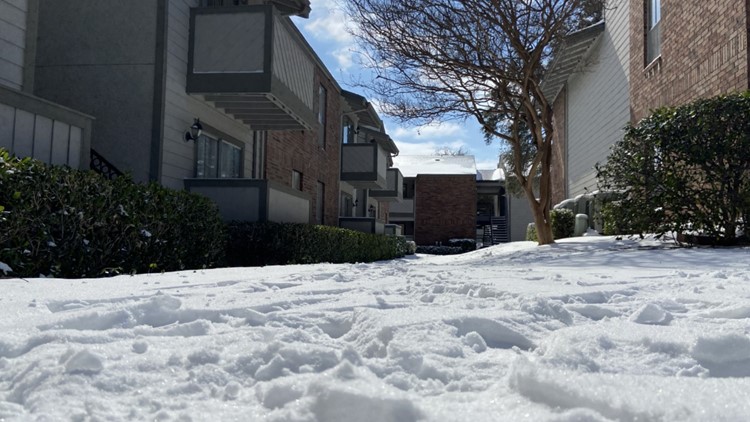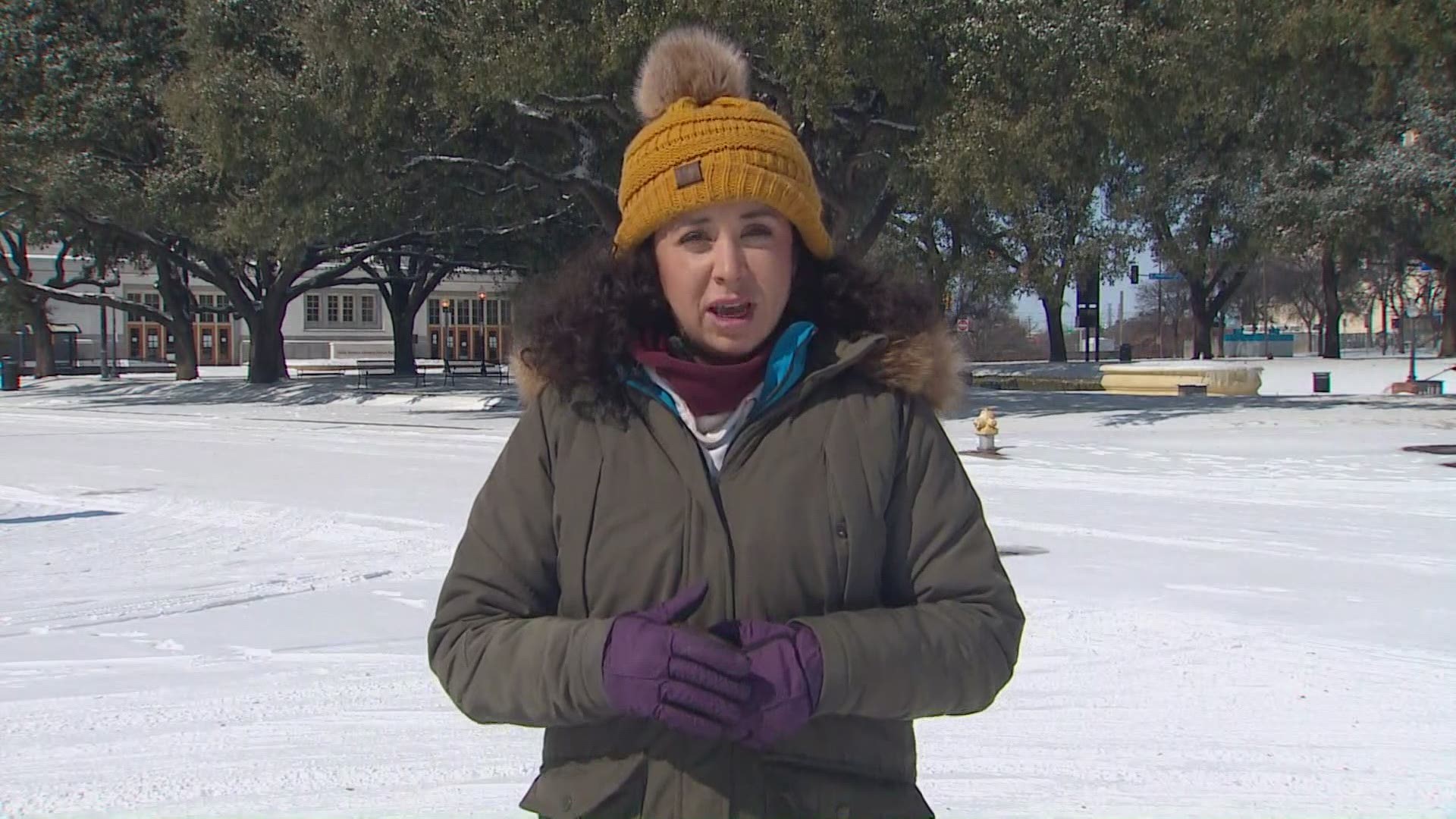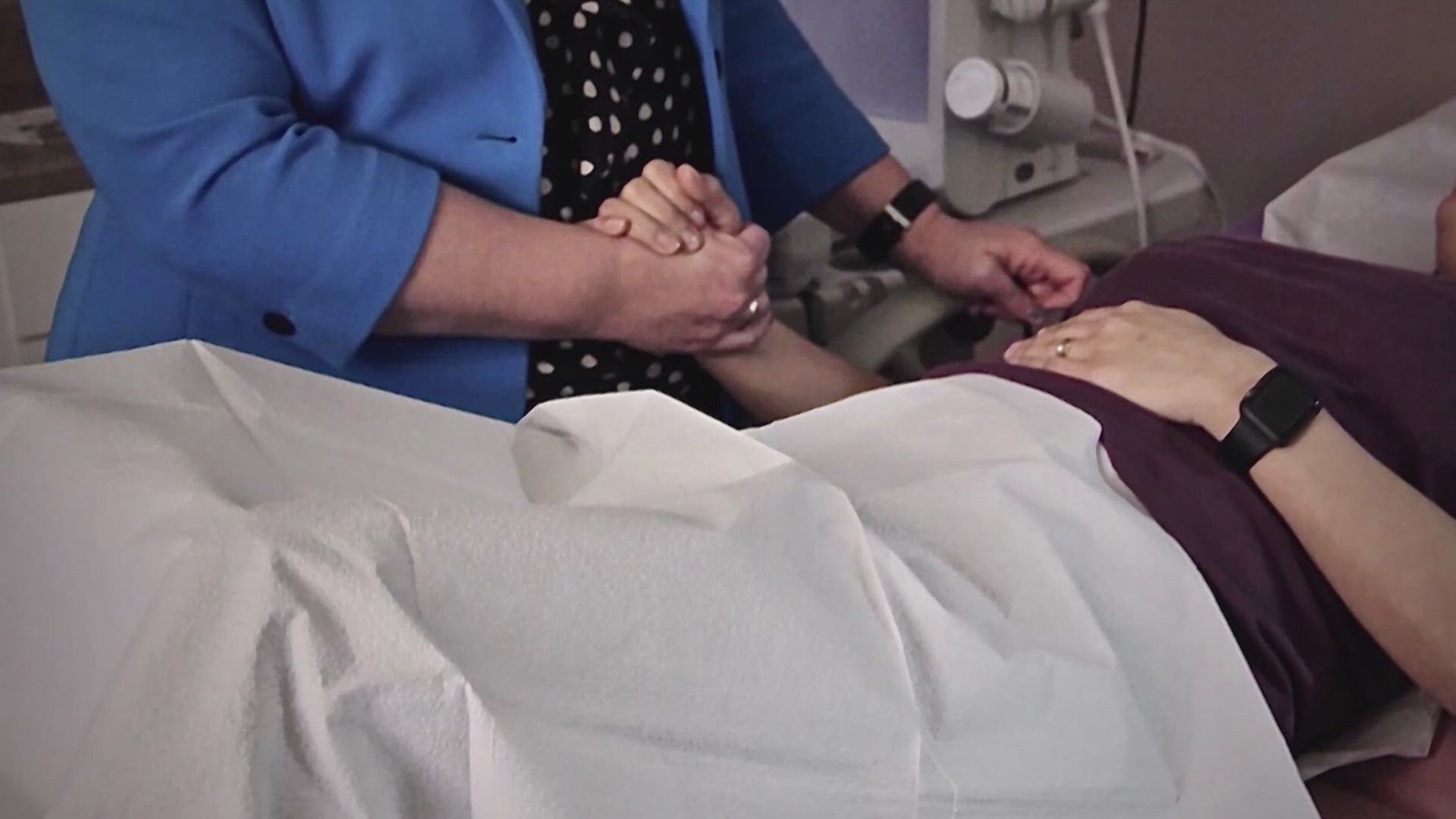DALLAS — While some people are able to enjoy a rare snow event in Texas, it's far from a typical President's Day holiday off from work and school. Countless Texans remain trapped in their homes without proper heating, electricity, or a way to safely drive someplace for help.
Power outages and the cold weather itself can pose health hazards for many. Here are some of the tips from experts on how to stay safe during this unique winter storm.
How cold weather impacts your heart:
Not all of us are cut out to be in snow for long periods of time. When the temperature drops, your heart is working harder. Symptoms of that can include:
- Heart rate increases
- Blood pressure increases
- Blood vessels constrict
- Risk of clotting increases
Cardiologist Aaron Horne from Medical City North Richland Hills explained that anytime the temperature falls below 40 degrees, it’s important to be careful while exercising or even playing outdoors.
"One of the main things I don't want...is for people to become couch potatoes during all of this, because inactivity is going to then increase our risk for coronary events as well," said Horne. "However, we want to definitely try to exercise (outside) when the temperature is a little bit above 40 if possible."
If you do choose to spend some time outside, layer up!
- Keep your head and ears covered with a warm winter hat. We lose a lot of heat from our head, so it’s important to make sure it’s protected. This is especially important for children because their heads are a much larger proportion of their body’s surface area.
- Protect your fingers and toes with gloves, wool socks & boots and stay dry!
- Keep your face covered
What to know about frostbite and hypothermia:
Prolonged exposure to extreme cold puts people at high risk for frostbite, which is when a body part is exposed and sustains tissue damage. It usually starts with redness and pain — then progresses turning almost white — and then becomes painless.
Skin might also start turning colors. If your skin turns dark (purple hues) that’s a sign of a real emergency.
People living with diabetes, vascular disease, or neuropathy might not be able to feel their limbs becoming cold.
Hypothermia can also occur when our core body temperature drops very low and can be dangerous, if not fatal. Once you start to shiver, it’s time to get out of the cold. Shivering is an early warning sign that your body is trying to create friction to warm you up.
Dangers of carbon monoxide in cold weather:
If you lose electricity for long periods of time, experts say do not use a gas stove or oven for heat. It's a fire hazard and a carbon monoxide hazard, as well.
If you're using back-up generators, the exhaust has carbon monoxide in it, so make sure those are placed outside in a well-ventilated area.
Symptoms of carbon monoxide poisoning:
- Headache
- Nausea
- Excessive daytime sleepiness
- Fatigue
- Lethargy
"Those are all signs that they might be being exposed to carbon monoxide and you want to get out of the house immediately and call the fire department right away," said Cleveland Clinic’s Dr. Tom Waters.
Experts say make sure you have both smoke detectors and carbon monoxide detectors in your home, and check both to be sure they’re working.




